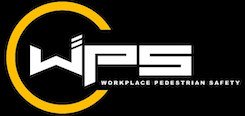It goes without saying that the financial cost of workplace accidents is substantial, to say nothing of the human cost they impose. As some of the most commonly employed warehouse equipment, forklifts have been at the centre of their fair share of incidents. But it’s not just the fact that forklifts are popular, forklifts pose inherent dangers, particularly when on the move and when loaded with materials. Forklift safety barriers are just the cherry-on-top of the world of training that employers must ensure their staff are experts at.
Forklifts are compact by design, but the loads they carry can be far from compact. And whilst they are relatively small in size, they are certainly not lightweight, ditto for the loads typically ferried around the warehouse floor by forklift operators. As a result, it’s easy for forklifts to become unstable.
To put this into numbers, forklifts typically weigh in at around two tonnes–already a considerable weight for a vehicle that’s making its way around your warehouse floor. When fully loaded, this weight can balloon up to five tonnes. Combined with a busy warehouse floor filled with workers, improperly managed forklift operations can be accidents in the making. Let’s make sure that doesn’t happen to you.
1) Invest In Training
The single biggest impact you can have on the safety record of your warehouse pedestrian barriers operation is investing in proper training for your workers. Proper licensing should be the norm and each worker should be made aware of the safety considerations of your individual worksite and given adequate training and preparation to ensure they’re not putting anyone at risk when they ‘get behind the wheel’. Even if your warehouse is lucky enough to employ well-trained and experienced workers, regular safety refresher courses will ensure everyone is keeping safety top-of-mind and foster a ‘safety culture’ in your workplace–something we’ll get to later on.
2) Service & Inspect Your Equipment
Your forklift protection barriers is an asset, depreciating in its own value as it may be, and it is an essential piece of warehouse machinery. Furthermore, ensuring your asset is well-maintained and regularly serviced means your workers aren’t injured or even killed by faulty equipment that required maintenance or that should have been taken out of commission entirely. However, in addition to proper servicing by an experienced forklift mechanic, your workflow should include regular inspections of your forklifts between inspections. The last thing you want is an employee working a forklift that never should have been thanks to a fault that could have easily been spotted by someone on your floor.
3) Invest In Safety
Forklift safety doesn’t just stop at the machine itself. There are many ways you can ensure your forklift operations keep running smoothly, without injury, and with minimal risk to your workers by simply making an investment in safety. These include simple implementations such as signage, which may or may not be governmentally mandated in your place of operations. But there is plenty of room to go the extra mile, such as investing in forklift safety barriers, which keeps foot traffic segregated from forklifts and other machinery on your warehouse floor.
4) Create a Culture of Safety
When all of the above items are combined, you start to create a workplace culture focused on safety, which is perhaps the single biggest differentiator between safe workplaces and unsafe workplaces. A culture of safety means workers are looking out for their own safety and for the safety of others. It means instinctually checking equipment before it’s used, adhering to safety regulations and on-the-ground rules, and regularly appraising the safety standards of their own workplace.




